-
Posts
3,517 -
Joined
-
Last visited
-
Days Won
27
Content Type
Profiles
Forums
Blogs
Gallery
Events
Store
Posts posted by bigjarofwasps
-
-
-
On 28 January 2020 the Government of Nicaragua officially accepted the Iraq Commitment Medal for retention by their military recipients who qualified for the medal for wear on their military uniform.
0 -
20 hours ago, ayedeeyew said:
Many thanks ayedeeyew, that certainly is very interesting.
0 -
Alan,
I don’t believe WATKINS has a marked grave.
In Amanda Pulse’s book Jack and the Old Jewry, there is a photograph of the plot (general area) where he is buried.
If you haven’t read this book, I highly recommend it, she documents the lives of all the City Bobby’s with a connection to the Ripper.
Gordon.
1 -
Thanks Alan, another fascinating post!!!
0 -
-
9 minutes ago, Mike McLellan said:
For my eyes, the most distinguishing identifier is the “shadow” of the left collar on the medal on the right. That, as well as the chin, as you point out, makes me think that this is not a case of incorrect ribbon. The medal is, indeed, an EviiR. If not coronation, then what would be lower in precedence than that?
I agree Mike, the closer I look the more convinced I am that they are both Edward V11 medals.
They have to be both 1902 Coronation Medals, I can't find any other medal that it/they could be.
Not the 1903 visit to Scotland medal, as this has no stripes on the ribbon and has a thistle clasp on the top and I can see no reason why he would have been involved in that.
His trio should look like this, it's a totally mystery.....................
0 -
I contacted the Metropolitan Police Museum, to see if they could shine any light on this hazard an opinion or provide any other examples of such a case as this. They were very prompt in their reply and offered the following...
"Thank you for your enquiry. The middle medal appears to be smaller than the other two and the ribbon of the furthest right medal seems to be different to that of the middle medal. Our copy of “The Metropolitan Police – The Men and Their Medals – Volume 1” (https://www.amazon.co.uk/Metropolitan-P ... 1873313187) states Bradley’s medals to have been:
1887 – as a PC on W (Clapham) Division
1897 – as Sergeant on S (Hampstead) Division
1902 – as Sergeant on S Division
1911 – as Sergeant on S Division, which he was also in when he retired on 17 July that year (the Coronation was 22 June)
I would therefore conclude that (left to right) these medals are 1887 Jubilee Medal with 1897 clasp, 1902 Coronation Medal and 1911 Coronation Medal either on 1902 ribbon or with the two outer stripes of 1911 ribbon unclear or hidden. Such a ribbon mistake is not unheard of – we have even found one or two examples in our own collections! – and would be understandable given his retirement less than a month after the coronation".
Not an unreasonable conclusion, with regards to the fact that perhaps the last medal is in fact a 1911 medal on a 1902 ribbon. That would certainly see feasible. I have looked as closely as I can at the last medal, the crown certainly looks very Edward V11, but the chin could be GV1R?
But the arms of the medals are both the same and "1911" medal doesn't have a ring as you'd suspect?
Has anyone ever seen a 1911 medal with an arm instead of a ring? An early prototype perhaps??
Although the medal in the photo does appear smaller, I believe this to be an optical illusion due to it being at a slightly different angle than the other two. If you measure the arms they are both the same size.0 -
1 hour ago, Alan Baird said:
You may well be correct with your theory Gordon.
I checked with ancestry and his father was a porter and died long before 1902 so my theory that the Coronation medal might have been his father's medal...…...………... died a death.
Henry and his medals not to mention his family certainly are a puzzle.
I can't find him/them on the 1891 census, yet I know he married his wife Emma in 1887 and they had a son Bertram in 1890 who was born in Clapham.
In 1901 their living at 82 Sebright Street, Barnet. Henry his wife Emma, Bertram (11), Gladys (9), Elsie (6)Grace (3) and twins Dorothy & Alice (1).
By 1911 they've moved over the road to 75 Sebright Street, Barnet, Henry his wife Emma, Gladys (19), Elsie (16), William (15) Grace (14) Iris (5), Winnifred (1).Assume Bertram has left home by this time, but am unsure where William has come from and what's happened to Dorothy & Alice!!
8 children is some going mind, even by the standards of those days!!!
Bertram and William both serve during the First World War, Bertram being discharged having been wounded in the face! .
0 -
Interesting observation Gents, with regards to the apparent size difference. I like Alan just assumed this was an optical illusion and the difference in angles that the medals appear to be in might account for why the first and third look silver in colour whereas the middle one appears darker.
Personally I think that we can be fairly confident that medals two and three are in fact both 1902 Coronation Medals, but as to why he would deem it appropriate to wear two is anyone's guess.
The most likely conclusion in my mind, is that this photograph was taken just before he retired and he hadn't yet been issued with his 1911 Medal, but knew he was entitled to a third medal and wanted to be photograph wearing three medals before he had to had his uniform back, so borrowed one from another Bobby at the nick for the purpose of the photograph?
0 -
Thought this might be of interest?
As you can see this chap is wearing two 1902 Coronation Medals as well as the 1887/1897 Jubilee Medal.
The reason for this is very curious and anyone's guess?
His name is Henry BRADLEY.
He joined the Metropolitan Police on the 14.06.1886 warrant number 71882, he was posted to W Division and was there in 1887 for Golden Jubilee. On the 10.06.96 he was promoted to Sergeant and posted to S Division as 55S. He remained in S Division until he retired on the 17.07.11.
He was stationed in Barnet and appears numerous times in the local paper.My research into him is still a work in progress, that I hope to post in the near future.
0 -
-
On 11/11/2018 at 17:25, Alan Baird said:
Somebody recently said, 'it is hard to imagine there are still important medals out there, after all this time.'
They were referring, in general, to the Policemen that served in London during the 1888 period [JTR] and this was an informed observation. I would class myself as an expert, in Police medals from this period, so lets have some fun.
I will give you a short story regarding a medal I purchased approximately a year ago which I consider to be an extremely important one.
The medal was being sold as part of a small group of 4 Police medals which were all approximately from the same period. The seller was one of the most respected and professional London Auction Houses and has a worldwide reputation and following. [Auction Houses have archives, December 2017 sale refers] The lot/medal could have been viewed at both the preview and completed catalogue stages, on the Auction House site. It would also have been available to view on sites like 'the salesroom.' The lot/medal was on open view to the world for approximately one month and not just to hundreds of collectors and dealers but probably to many thousands of collectors and dealers.
To cut a long story short, I purchased the lot/medal without any real opposition, sold off the other medals and kept the important one. This was the Metropolitan Police Coronation medal for 1902 and awarded to, 'Insp. J Helson M divn.'
' Insp. J Helson is :-
[a] On the 24th of October in 1887, Detective Sergeant Joseph Henry Helson was promoted to Inspector and transferred to Bethnal Green or 'J' division. Detective Inspector Joseph Helson was in charge of the Bethnal Green C.I.D.
At 06.45am on the 31st of August in 1888 Detective Inspector Joseph Helson was notified of Mary Ann 'Polly' Nichols murder, examined her body at the old mortuary, in Old Montague Street and then examined the murder site. Detective Inspector Joseph Helson subsequently took charge of the murder investigation. He attended the inquests and liaised closely with Detective Inspector Abberline especially on the murder of Annie Chapman.
[c] Detective Inspector Joseph Helson also had a good team of detectives in Bethnal Green and Detective Sergeant George Godley particularly stood out. This is a relevant point later in this story. There is so much information of Detective Inspector Joseph Helson that it would take too long to list it all so lets cut to the chase.
[d] On the 14th of January in 1895, Detective Inspector Joseph Helson retires on pension from Bethnal Green division and the Metropolitan Police. Joseph Helson was 49 years old and had completed 26 years and 10 days in the Metropolitan Police. Joseph Henry Helson and family return to his place of birth and retired in Devon.
Joseph Helson was recalled to duty with the Metropolitan Police on the 20th of June in 1902 for the Coronation Parade through London. Inspector Joseph Helson was assigned to Southwark or 'M' division and given the temporary warrant number of 1869.
Now somebody will say why did he not serve with Bethnal Green or 'J' division instead of Southwark or 'M' division in 1902. Well there are three reason for this deployment.
[a] Firstly, there was an Inspector's vacancy at Southwark or 'M' division.
Secondly, Joseph Helson's son Albert Henry Helson was a young detective serving in Southwark or 'M' division at the time.
[c] And last but not least, his old colleague and friend Detective Sergeant George Godley, was now Detective Inspector George Godley in charge of the Southwark C.I.D.
The moral of the story is that like Edward Watkins and Joseph Henry Helson, there is always the possibility of new finds out there.
[The medal was out there and in plain view for the world to see.]
regards,
Alan.
1 -
Samuel Knowles
Born 1868 in Norfolk.
1888 23rd July Joins Met warrant number 73828 posted to T Division.
1888 31st October Posted to from T Division (collar number 136T) to J Division(collar number 105J).
1889 30th June & 8th July Illustrated Police News (see below)
1891 Census 235 Wilmot Street Bethnal Green with his wife Alice and son Charles.
1897 Jubilee Medal J Division.
1898 25th April Old Bailey
https://www.oldbaileyonline.org/browse. ... #highlight
1899 12th May The Globe (see below)
1899 29th May Old Bailey
https://www.oldbaileyonline.org/browse. ... #highlight
1899 9th December Disciplinary issue.
1900 3rd July Disciplinary issue.
(At some point during the next 11 months he's posted from Bethnal Green to Wood Green)
1901 4th May Essex Guardian. (see below).
1901 Census Augusta House ******ford Road Woodgreen.
27th January 1902 posted back to T Division (collar number 270T).
1902 Coronation Medal T Division.
1911 Census 79 Amyand Park Road.
1911 Coronation Medal T Division.
4th August 1913 Retires T Division.
1924 Dies 22.02.1924 address given as 40 Sherlan Place Twickenham. Will sum of £235 left to his wife Alice.0 -
John Thomas Houndsome
John Thomas Houndsome, born in Alverstoke, Gosport, Hampshire on 18 October 1868, was the second child of James Houndsome, a private in the Royal Marines, and Louisa White.
He joined the Royal Engineers at Gosport on 19 January 1888 aged nineteen. His height given as 5` 11" chest as 35" weight 9.7 stone and his occupation as Messenger. He is given the regimental number 22412 but was discharged as medically unfit at Aldershot having served just sixty-eight days and having spent a month in hospital with rheumatic fever which had weakened his heart. Upon discharge his intended place of residence is given as 20 Leesland Road, Gosport, his parents are given as living at 24 Leesland Road.
He then went to work nearby for a dairyman, Harry Holding.
Until he joins the Metropolitan Police on 30 September 1889.
He gives his occupation as labourer and his height now 6` chest 35.5" weight 11 stone. The fact that he was medically discharged from the army doesn't appear to have been an issue.
The work with Mr Holding perhaps helped him recover his health and make him grow a bit and put some weight on!
He is firstly posted to S Division and was stationed in Barnet and lodged with eight other Police Constables in the section house of the police station at 26 High Street.
On Saturday the 24th October 1891 he appears in the local paper - The Barnet Press - following a case of a local woman who by the sounds of things was prone to drink.
"Thwaites again - On Thursday before C H Cook Esq JP. Elizabeth Thwaites a char woman of no home was charged with having been drunk and assaulted PC Thomas Houndsome. It appears that the Constable found the woman disorderly in the street and took her to the police station. When placed in the dock she took off her boot and threw it at the Constable striking him in the eye making it bleed - remanded.
On the 9th May 1892 he was transferred to Portsmouth Dockyard.
Returning to S Divsion on the 7th June 1894 and stationed at Shenley Police Station on Harris Lane.
He married Emma Green, who had worked as a cook in Barnet, on 20 August 1894 at St Botolph’s, Shenleybury.
They lived in London Road at No 3 Grove Place next door to Sergeant Sackville Boobyer and his family.
Kathleen, their only child, was born in November 1896.
In 1897 he qualifies for the Diamond Jubilee Medal.
In 1901 he is present in a photograph of named officers at Shenley Police Station. At this point his collar number is 118 S.
In 1902 he qualifies for the Coronation Medal.
After living in Shenley for about twelve years Thomas was transferred to Edgware in 1906/07 and they moved to Capel Terrace in Meads Road.
He died on 27 December 1909 aged forty-one and was buried in the churchyard of St Lawrence, Little Stanmore.
0 -
4 minutes ago, paul wood said:
Somewhat better value than the last. Although i could get a bottle of gin with the book and the postage which I supect would provide me with greater pleasure.
Paul
I bought the South and South East one, I'll let you know...................?
0 -
ACTING POLICE SERGEANT 618 S GEORGE MORRIS
George Morris was born in Westport, south Somerset on 2 April 1852. He was the fourth child of John Morris, an agricultural labourer and parish clerk of Barrington where they lived, and Eliza Barrett, a kid glove maker. George was living in London with his wife, Mary Hunter, who was originally from Cumberland, when their daughter Ellen was born in 1878. He worked as a labourer and they lived in south Kensington at the same address as his elder brother Henry, his wife and two children. The following year on 10 March 1879 George joined ‘S’ Division of the Metropolitan Police and when a second child, Alice, was born in 1881 he was stationed at Edgware Police Station; they lived in Church Road, Great Stanmore. After being appointed Acting Police Sergeant in April 1898 he was transferred to Shenley where they remained until he resigned on 11 April 1904 after twenty-five years service with a yearly pension of £57 8s 6d. During their time in Shenley the Morris’ lived in New Road (No 7) near the Mission Room. Ellen, the eldest of their five children married Archibald Lea, an oilman, at St Botolph’s, Shenleybury in 1903.
They returned to south Somerset and lived in the small town of Wincanton where their twenty-one year old daughter, Rose, died in 1906. George died on 10 July 1920 not long after moving to the village of Ludwell near Salisbury, Wiltshire.POLICE CONSTABLE 366 S LEONARD W. NEVILLE
Leonard William Neville, born at Chalfont St Giles, Buckinghamshire on 9 April 1867, was the youngest son of James Neville, an agricultural labourer, and Mary Smith. He married Elizabeth White on 2 May 1892 at the parish church in Chalfont St Giles and their first child, William was born in December. The following year on 2 October 1893 he joined ‘S’ Division of the Metropolitan Police at New Scotland Yard. Prior to this he worked as a labourer for Henry Damer Cape at 383 Hornsey Road, Holloway.
When a second child, Reginald, was born in 1894 they were living in Camden Town. After transferring to Shenley Police Station in about 1896 they lived at Elm Cottages in Green Street later moving to Chapel Cottages in London Road. Three more children Hilda, Aubrey and Laurence were born in 1897, 1901 and 1907.
P. C. Neville resigned on 3 May 1919 after twenty-five years service with a pension of £85 14s 8d per annum. They remained in Shenley and continued to live at Chapel Cottages until his death on 12 May 1951 aged eighty-four. Elizabeth went to live at the Wilton House Old People’s Home and died on 11 April 1962. William and Reginald Neville both served in the Bedfordshire Regiment during WWI and Reggie joined the Metropolitan Police in 1919.POLICE CONSTABLE 193 S DANIEL J. MURPHY
Daniel Jeremiah Murphy was born on 23 February 1861 at Kingston, Portsea, Hampshire. He was the eldest son of Daniel Murphy, a Royal Navy seaman from Castletown, Cork, Ireland, and Mary Ann Martin from Portsea. Fifty-six year old Daniel Snr was accidentally drowned in Portsmouth Harbour when he fell overboard from a coal hulk on Christmas Day 1878. He had been returning from a trip ashore to buy oranges with one of his children.
Daniel attended the Gunnery School in Portsmouth before joining the Royal Navy as a Ship’s Steward’s Boy in April 1876 progressing to Ship’s Steward’s Assistant when he turned eighteen in February 1879 and had signed on for ten years continuous service. After being discharged just three years later in July 1882 he joined ‘S’ Division of the Metropolitan Police at Great Scotland Yard, Westminster on 4 June 1883.
He married twenty-two year old Elizabeth Rule, a miller’s daughter from Suffolk, in Islington in 1889 and when their first child, Elizabeth Florence, was born in November that year they were living in Chipping Barnet following his transfer to Barnet Police Station. Elizabeth was baptised on 24 September 1890 at Great Cornard, Suffolk. They were living in Sebright Road when another daughter, Grace, was born in 1892. Elizabeth died after the birth of their third child, Charles, in November 1893 and Daniel married Sarah Ireland, a widow with an adult son and teenage daughter who worked as a cook in Barnet, in 1895. Charles, who was baptised at Great Cornard on 19 August 1894, lived with his maternal grandparents in Suffolk.
Daniel was stationed at Shenley Police Station from about 1896 and lived with Sarah, Florence and Grace at No 2 Bay Cottages, The Folly (the village end of Rectory Lane where 1 & 2 The Pines are today between Coombe and Warwick Cottage). Grace died aged thirteen after a four months illness in November 1905 at St Mary’s Hospital, Paddington. Eight members of the Metropolitan Police carried her coffin from the Murphy’s home to the churchyard at St Botolph’s, Shenleybury for her funeral.
Daniel resigned on 8 June 1908 after twenty-five years service with an annual pension of £54 3s 10d. After leaving Shenley he became the caretaker of Castelnau Mansions in Barnes, S.W. London later moving to Reading. He died at the Star Inn, Newbury on 24 February 1927.POLICE CONSTABLE 256 S WILLIAM C. LANCASTER
William Charles Lancaster was born in the hamlet of Moulsham, Chelmsford, Essex on 2 October 1869. He was the eldest son of William Lancaster, a brickmaker, and Eliza Drane, who lived in Lower Anchor Street, Chelmsford. Prior to joining ‘S’ Division of the Metropolitan Police at Great Scotland Yard on 22 December 1890 William was employed as a labourer by William Hull Boardman, a brick and tile maker, of Duke Street, Chelmsford.
When he married Ellen Jane Smith, a housemaid originally from Worcestershire, on 14 September 1892 at St Stephen the Martyr Church, St Marylebone, he was stationed at New Street Police Station, St John’s Wood and lodged nearby in Barrow Hill Road. Their daughter Ethel was born in 1894 and baptised at St Botolph’s, Shenleybury following William’s transfer to Shenley Police Station. They stayed in the village for about twenty years and had six more children who were born between 1896 and 1912. In the early years they lived in Harris Lane and later in New Road next door to Fern Cottage. William was a keen gardener and a regular prize-winner at the annual Shenley Cottage Garden Show.
After being transferred to Barnet Police Station just prior to 1914 they lived in Salisbury Road, High Barnet. William resigned on 27 March 1916 after twenty-five years service with an annual pension of £64 14s 1d and became the manager of the Rose and Crown Inn, Church Street, Welwyn before moving to Hastings, Sussex. They were living in Shropshire, where their youngest daughter was married to a dairy farmer, when Ellen died in 1953 and William in 1961 aged ninety-one.
Alfred Ethelred Lancaster, their eldest son, was killed in action on 3 May 1917 aged twenty-one. His name is on the Shenley war memorial.MOUNTED POLICE CONSTABLE 598 S FRANK SMITH
Frank Smith, born in Blackmoor, Selborne, Hampshire on 10 January 1869, was the fifth son of James Smith, an agricultural labourer, and Ann Walker. When he was nineteen he joined the 20th Hussars as a private in February 1888 transferring to the 18th Hussars four months later. He spent just over a year and a half with his regiment in India returning home in July 1891. After five years and four months he was transferred to the army reserve for a further six years and eight months.
In 1895 prior to joining ‘S’ Division of the Metropolitan Police on 25 March at New Scotland Yard he was employed as a coachman by Dr Edward Crouch in Gosport, Hampshire. At the time of his marriage to eighteen year old Emma Chamberlain, a farmer’s daughter from Norfolk, at St Cuthbert’s Church, Hampstead in October 1898 he was stationed at West Hampstead Police Station in West End Lane not far from the large detached house where Emma was employed as a servant.
Following the outbreak of the Anglo-Boer War Frank was recalled to army service in January 1900 and embarked for South Africa on 10 February. He returned just over a year later and was reappointed to police duties in March 1901. Later that year he was transferred to Shenley Police Station where he remained until resigning on 13 June 1921 aged fifty-two after twenty-six years service with a pension of £165 4s 8d per annum. He and Emma lived with their two children, Sidney, born 1903, and Frank, born 1909, at Daisy Cottages on London Road (Metropolitan Police property) for about twenty years. They stayed in Shenley after Frank retired moving to a new council house in Anderson Road and later to Woodhall Lane. Emma died in 1936 and Frank in 1945. They were buried in the churchyard at St Botolph’s, Shenleybury where a headstone marks their grave.POLICE CONSTABLE 106 S DONALD ROSE
Donald Rose was born on 2 March 1867 at Auchindoir, Aberdeenshire, Scotland. He was the seventh son of Alexander Rose, a tailor, and Sophia Cowie Gordon, who lived at Knapperthillock, Auchindoir. When he was twenty-one he joined ‘S’ Division of the Metropolitan Police at Albany Street Police Station, St Pancras on 30 July 1888. His older brother, Alexander, a tailor, lived in Battersea and a younger brother, Robert, worked as a tramcar conductor in Islington before joining the Metropolitan Police in 1892.
Initially, Donald lived in the section house of the police station at Albany Street later taking lodgings nearby. He married Maud Mary A. Chester, a carpenter’s daughter from Buckinghamshire, on 1 June 1898 at Christ Church, Albany Street, and their first child, Maud Violet, was born in March 1899 after Donald had been transferred to Shenley Police Station. For several years they lived at the lower end of London Road in one of the semi-detached cottages just past Woodhall Lane opposite the Smithy. Two more children were born during their time in the village: William Alexander in 1901 and Donald Albert in 1903. On 11 August 1905 Donald was transferred to ‘N’ (Islington) Division. They moved to Seaford Road, South Tottenham and a daughter, Annie Georgina, was born in September. Three year old Donald Jnr died the following year and another son George Albert was born in 1907.
Maud died in January 1910 aged thirty-seven and later that year, on 28 November, Donald resigned from the Metropolitan Police after twenty-two years service with an annual pension of £41 19s 1d. He returned to Aberdeenshire with his young family and lived in Ballater, Glenmuick where his brother David and his family also lived. Donald married Mary Gordon in 1926 and died on 6 December 1933.
The Rose family maintained their links with London and Donald’s youngest son, George, also joined the Metropolitan Police. Violet and Annie both married Metropolitan police constables.POLICE CONSTABLE 10 SR WILLIAM JONES
William Jones was born on 27 January 1854 in the village of Eglwysbach, Llanwrst, Denbighshire, North Wales. He was the third child of William Jones, a general labourer, and Margaret Evans. When he was seventeen William was employed as an assistant porter by the London & North Western Railway at Tal-Y-Cafn and Eglwysbach station (opened in 1863) on the Bettws-Y-Coed branch line from Llandudno Junction. Ten years later, in the spring of 1881, he was an unemployed gardener and living at Lerpwl Cottage, Eglwysbach with his parents and three youngest sisters. The following year, on 18 August 1882, he joined ‘S’ Division of the Metropolitan Police at Old Scotland Yard and was stationed at Albany Street Police Station when he married Elizabeth Morris, a tailor’s daughter from Denbighshire, at St Mark’s Church, Regents Park on 18 January 1883; their daughter, Margaret, was born in November the same year. A second child, William John, was born in March 1886 after William had been transferred to Shenley Police Station and between 1888 and 1907 they had another nine children, two of whom died in infancy. For around twenty-eight years they lived in Green Street at Limes Farm, which was four doors down from the Green Willows beerhouse, where Shenwood Court is today. The four bedroomed house had a large garden and an adjoining farmyard with pig styes, a cow house, stable and other assorted outbuildings. William also rented the three quarter acre paddock next door. Fellow police constable Leonard Neville lived next door at Elm Cottages for several years before moving to Chapel Cottages in the village.
William was an active member of the Shenley and Green Street Total Abstinence Society which organised outings and entertainments several times a year. He also took part in fundraising events for the Church Missionary Society and for many years he was a regular prize-winning exhibitor at the annual Shenley Cottage Garden Show.
On 18 August 1907 William resigned after twenty-five years service with an annual pension of £54 3s 10d. At the end of August the Jones’ eldest son William, who worked as a baker, left England for the United States. Robert, his seventeen year old brother, and his sisters, Elizabeth and Edith, left in 1911 and 1912 to join him in Salem, Oregon where he was studying to become a doctor at Willamette University.
In the late spring of 1913 William, Elizabeth and their remaining four daughters also left Shenley for Salem. Mrs Jones’ fourteen year old nephew, Henry Morris, and Henry Southcombe, a friend of their son Ellis who later married Edith Jones, went with them. Ellis Jones’ wife, Agnes, died in July 1913 when their daughter, Mabel, was just under a year old and in 1914 he joined the rest of his family in Salem accompanied by his sister-in-law Emma Hitchings, whom he later married, and also Thomas Males, a gardener at the Grange in Shenley, and his wife, Margaret.
By 1920 all the family were living in Seattle, WA where William died on 1 March 1923 aged sixty-nine and Elizabeth on 10 April 1938. They were buried at Mount Pleasant Cemetery, Seattle.POLICE CONSTABLE 257 S DENNETT E. FOX
Dennett Edgar Fox was born on 30 April 1863 in the hamlet of Upper Dicker, Arlington, East Sussex. He was the second son of Stephen Fox, a blacksmith who died in 1874, and Jane Barnes. In the spring of 1881 nineteen year old Dennett was living in Cuckfield, Haywards Heath, Sussex where he was employed as a grocer’s assistant. Later that year he became a porter with the London, Brighton and South Coast Railway at Eastbourne station where he remained until resigning in October 1884.
He joined ‘X’ (Paddington) Division of the Metropolitan Police at Old Scotland Yard on 22 February 1886. In April the following year he was a witness at the wedding of his sister Clara who married Harry Brooker, a railway guard with the L, B & S C Railway, at St Peter’s Church, Croydon. Shortly after, in May 1887, Dennett was transferred to ‘E’ (Holborn) Division and lodged at the section house of Bow Street Police Station. When he married twenty-five year old Elizabeth Price, a farmers daughter from Malmesbury, Wiltshire, on 18 February 1889 at St-Martin-in-the-Fields, Strand he was lodging at the police section house in Leicester Square, near the Alhambra Theatre.
Their first child, Mabel, was born later the same year at Derby Buildings, Wicklow Street, Kings Cross but when their second child, Jessie, was baptised on 5 April 1891 at St Pancras New Church they were living in a large, and otherwise unoccupied, Regency house in Gordon Square, Bloomsbury which was part of the Bedford Estate. Their stay only lasted a few months and in October that year Dennett was transferred to ‘S’ Division. Mabel died in the summer of 1891 and when Daisy was born in 1893 they had moved to Church End, Finchley where he was stationed at Finchley Police Station. They rented rooms in a house in nearby Newcomen Road before moving to Malmesbury Villa, Birkbeck Road in North Finchley. Thirty-two year old Elizabeth died in 1896 leaving Dennett with the sole care of their two daughters who were aged just five and three. The following year he married Ophelia Bethia Clark from Malmesbury, a widow who was nine years older than her new husband and had seven children of her own whose ages ranged from eleven to twenty-five.
Dennett was transferred to Elstree Police Station in c1898 and they moved into a house in Drayton Road, Boreham Wood. He resigned on 5 April 1902 when he was thirty-nine after sixteen years service and received an annual pension of £26 4s 5d. They remained in Boreham Wood for several years before moving to Hanwell, Middlesex in c1909 where Dennett was an Insurance Agent and later a certified Bailiff. He died on 23 June 1949 aged eighty-six and Ophelia died in 1950 aged ninety-six.METROPOLITAN POLICE OUTSIDE THE POLICE STATION IN HARRIS LANE, SHENLEY c1901
Back row left to right:
P. C. Donald Rose, P. C. William Jones, P. C. Dennett Edgar FoxMiddle row left to right:
? P. C. Reuben Fordham (not in uniform), P. C. John Houndsome, P. C. Leonard Neville, P. C. Daniel Murphy, P. C. William Lancaster, P. C. Frank Smith, ? P. C. John Gardner (not in uniform)Front row seated left to right:
Act Sgt Sackville Boobyer, Sgt William T. Lanning, ? Sub-divisional Inspector Thomas Browning, Stn Sgt Richmond B. Young, Act Sgt George Morrishttps://shenleymiscellany.wordpress.com/
1 -
Found the following on another website, thought it they might be of interest?
Their medals must be out there somewhere....................
STATION POLICE SERGEANT 30 S RICHMOND B. YOUNG
Richmond Bennett Young was born on 10 November 1858 in the village of Odcombe near Yeovil, Somerset. He was the fifth child and youngest son of Charles Young, an agricultural labourer who died in 1861, and Eliza Chant, a glove maker. When Richmond was eighteen he married Mary Raison, also eighteen, at the parish church in Odcombe on 30 July 1876. The following year he began work as a porter for the London, Brighton & South Coast Railway working at the company’s main London goods depot at Willow Walk station, Bermondsey. Nine months later, on 27 May 1878, he joined the Metropolitan Police at Chelsea.
Initially he was in ‘T’ (Kensington) Division and their first child Alfred was born in 1879 at Luna Street, Chelsea. Mary Young was staying in Odcombe when their daughter Eliza Jane was born in November 1881, and they were living in Hammersmith when William was born in 1884; he was baptised the following year at Norwood Green. Their fourth and last child, Angeline, was born in Heston, Middlesex. Richmond was promoted to Police Sergeant in August 1890 and transferred to ‘P’ (Camberwell) Division. By 1891 the family had relocated to Bromley, Kent later moving to Brockley. Following promotion to Station Police Sergeant in January 1896 he joined ‘S’ Division and after two years at Barnet, where they lived in Sebright Road, he was transferred to Shenley in February 1898. They lived at the police station in Harris Lane and remained in Shenley until June 1903 when Richmond resigned aged forty-five after twenty-five years service with a pension of £81 13s 10d per annum. They went back to Odcombe briefly before returning to London where Richmond was an Inspector with the NSPCC. They lived in Bruce Grove, Tottenham eventually retiring to Bournemouth, Dorset. Richmond died aged seventy-eight on 22 August 1937.POLICE SERGEANT 53 S WILLIAM T. LANNING
William Thomas Lanning, born on 6 January 1869 at Ditchampton, Wilton near Salisbury, Wiltshire, was the eldest son of William Lanning, a carpenter & joiner, and Jane Lodge. When he was sixteen William was employed as a ‘lad porter’ by the GWR at Wilton Station but resigned after less than a year. Three years later on 17 June 1889 he joined the Metropolitan Police at Great Scotland Yard, Westminster. Prior to this he worked as a labourer for Henry Holdsworth, an Estate Agent & Auctioneer in Wilton. After joining ‘R’ (Greenwich) Division he lived in the section house at Blackheath Road Police Station in Greenwich.
In January 1893 he was transferred to ‘A’ (Whitehall) Division which was responsible for the safety of the Queen and Royal Family. He had lodgings in Buckingham Palace Road and in 1896/97 he was stationed at Osborne House on the Isle of Wight where he met Alice Jane Frost from Suffolk, who was in service at Osborne House. They were married at St Andrew’s Church, Westminster on 6 April 1897 and their first child Percy was born the following year at Hayles Buildings, Elliotts Row, Southwark; a second child, Violet, was born in November 1899 in Thrush Street, Newington.
In late December 1899 he was promoted to Police Sergeant and after transferring to ‘S’ Division was stationed at Shenley. During their time in the village the Lannings’ lived in one of a pair of two up, two down, brick and slate cottages, ‘Radlett Villas’, near the top of Radlett Lane next to the farmhouse at Wilton House Farm (demolished mid-20th century). Two more children, Stanley, born in 1901, and Conrad, born in 1902, completed the family. William was transferred to Wealdstone in 1906 where a new police station was built in 1908/09. They lived nearby in ‘Shirley Villas’ at 37 Claremont Road. For a few years he was stationed at Elstree Police Station but returned to duties at Wealdstone in 1915 where he remained until resigning on 26 July 1920 after thirty-one years service with an annual pension of £195 13s 6d. William became the caretaker at the Methodist Church in Locket Road, Wealdstone and was found dead in a gas filled room at the church hall on 15 December 1937. He was almost sixty-nine. Alice Lanning died on 6 July 1955 aged eighty-eight.ACTING POLICE SERGEANT 313 S SACKVILLE BOOBYER
Sackville Boobyer was born in the village of Stoke St Gregory near Taunton, Somerset on 4 May 1857. He was the fourth child of Francis Boobyer, an agricultural labourer, and Amelia Wall. When he was twenty-three Sackville joined ‘C’ (St James’s) Division of the Metropolitan Police on 2 August 1880 at Great Scotland Yard. The following year he was living in a section house near the Alhambra Theatre in Leicester Square which was also home to thirty-three constables, one sergeant and an Inspector and his family. In December 1887 he was transferred to the Woolwich Dockyard and nine months later he married Annie Goodall at St Nicholas’s Church, Plumstead.
After being transferred to ‘S’ Division the Boobyers’ first and only child, Frederick, was born in August 1889 at South Mimms. Sackville was promoted to Acting Police Sergeant in March 1892 and transferred to Shenley Police Station. They lived at No 2 Grove Place on London Road. He resigned on 7 August 1905 after twenty-five years service with an annual pension of £57 8s 6d and after living for a short time in St Albans they moved to Greenford Green, Middlesex. Annie died in July 1908 at Isleworth Infirmary five days after taking poison in the waiting room of West Ealing Station. She had been suffering from depression and at the inquest a jury returned a verdict of “suicide whilst of unsound mind”. After her death Sackville returned to Stoke St Gregory and in 1920 he married Mabel Jane Hearn. He died on 2 October 1937 aged eighty at Crickham, a rural hamlet on the Somerset Levels.
Sackville and Annie’s son, Fred Boobyer, had a long and successful career as a golf professional which began at the Porter’s Park Golf Club, Radlett and from 1910 he was with the Bristol and Clifton Golf Club.1 -
-
-
1 hour ago, Mike McLellan said:
All right brother. I googled “BNA” and the only hit I got was the Nashville Airport. Was this guy a singer at the Grand Ole Opry? Seriously, what is BNA? I like to cruise around various sites, especially if they’re relevant to this hobby of ours. Thanks. Mike.
British Newspaper Archive, it can be a wealth of information!!
0 -
Saw this earlier today, thought it might be of interest?
Did a quick search on the BNA site, could only find one small article on him as a young detective in the 1950's whereby he'd received a shiner during a scuffle.
This surprised me as I would have thought a Supt in the City Police would have made the papers regularly, clearly not.................
Still a nice piece though.
0 -
-




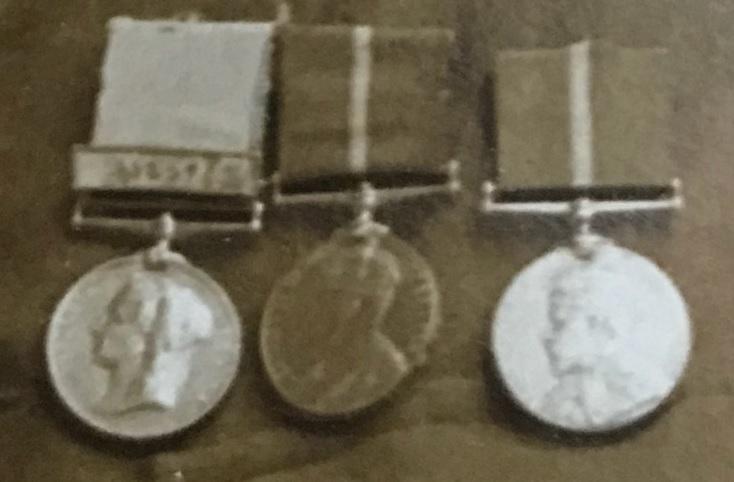




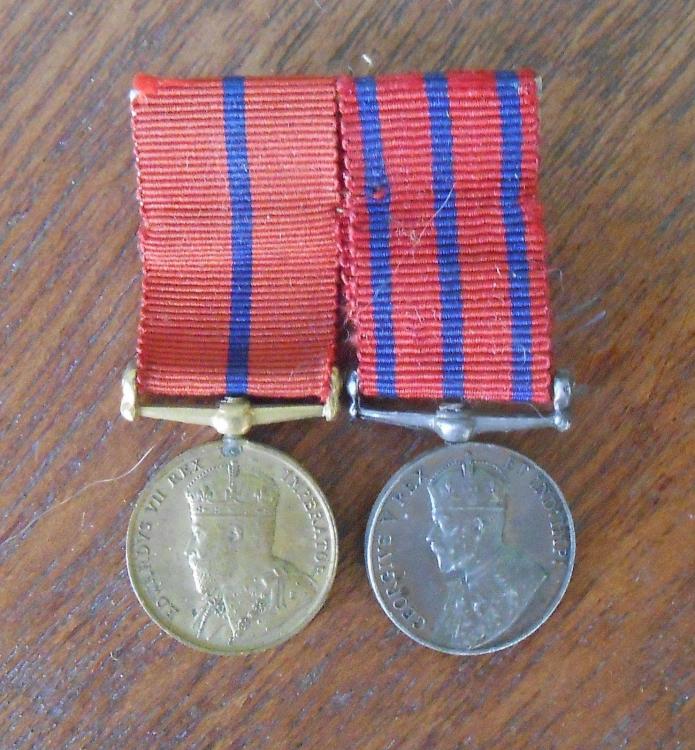
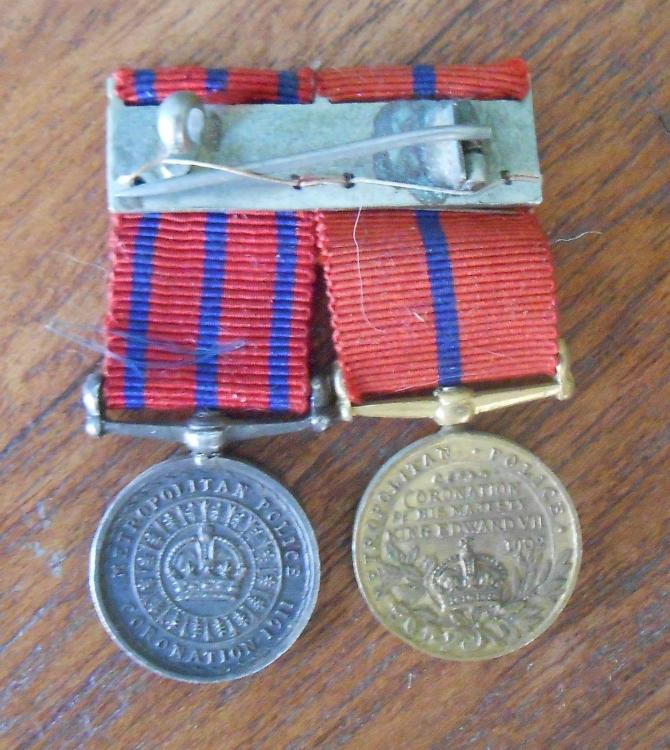
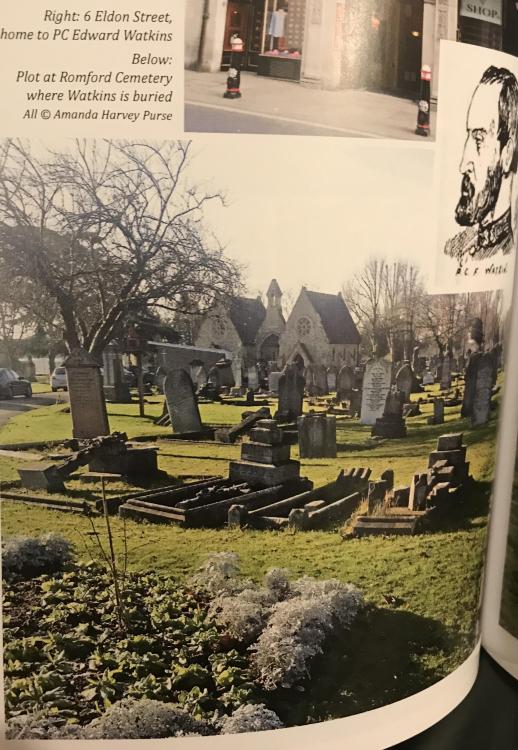
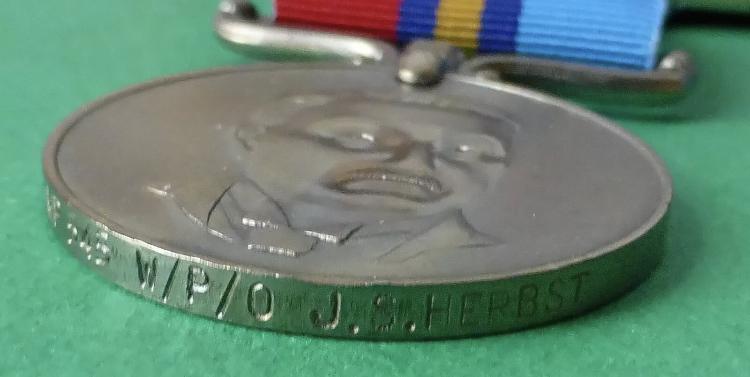

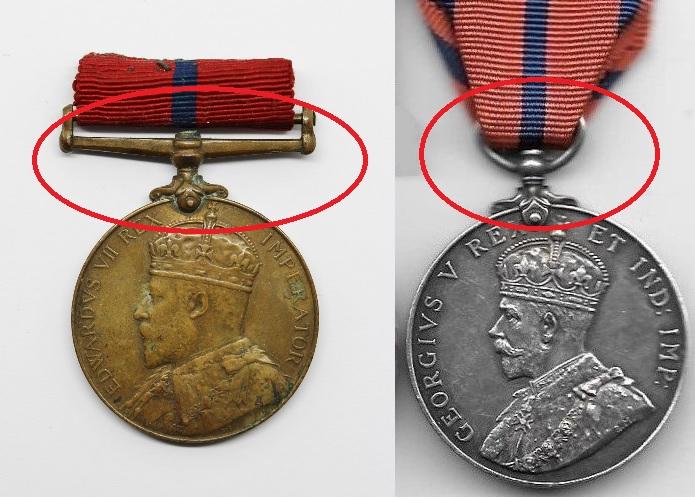
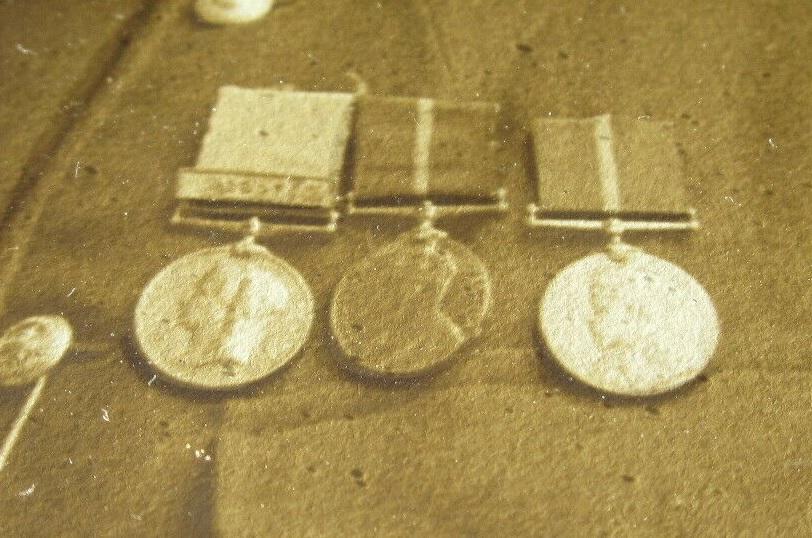

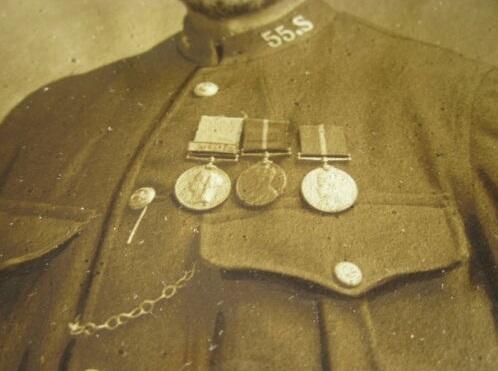

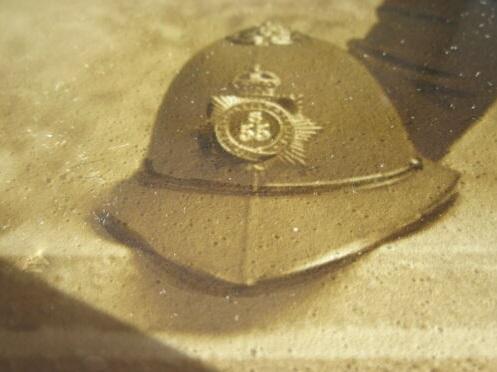
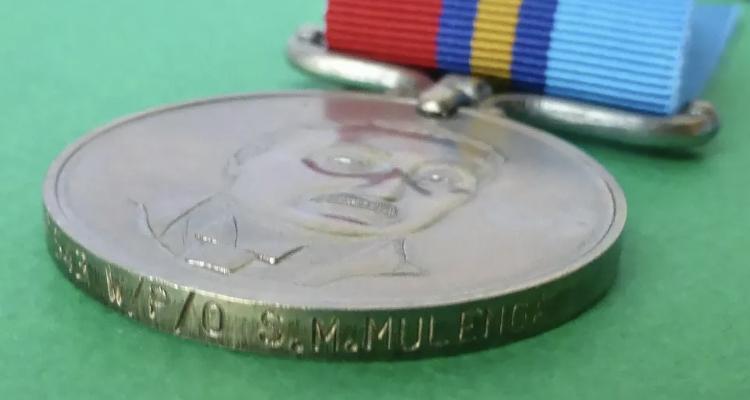
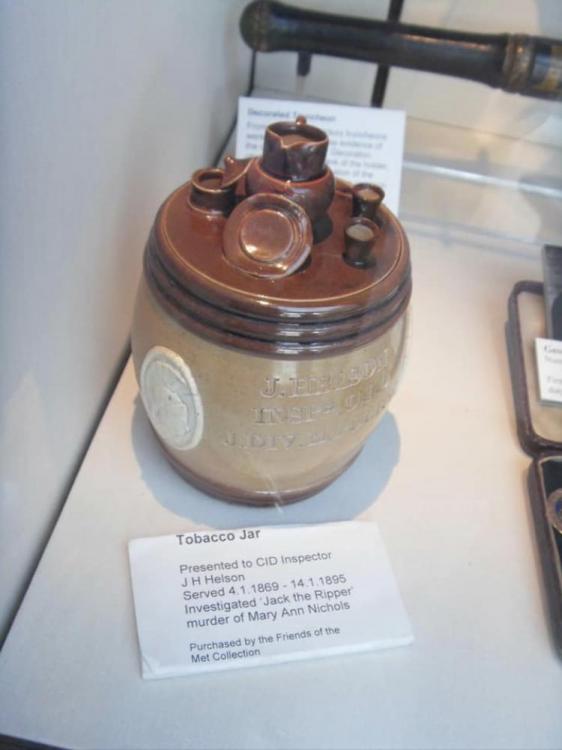
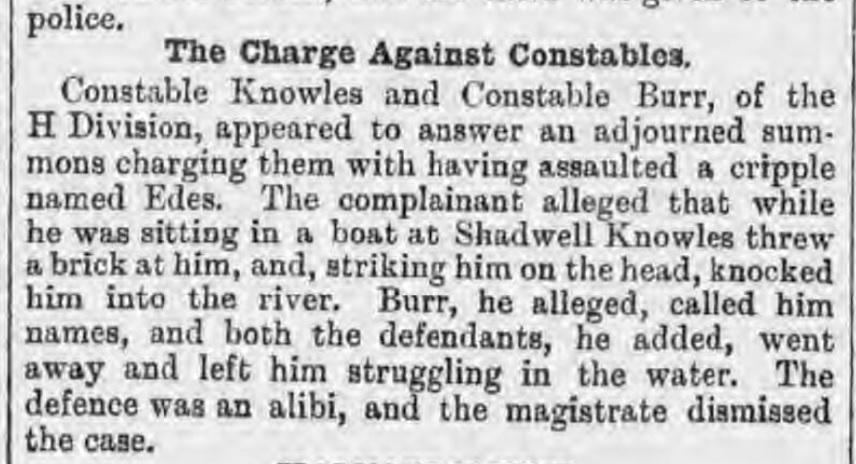
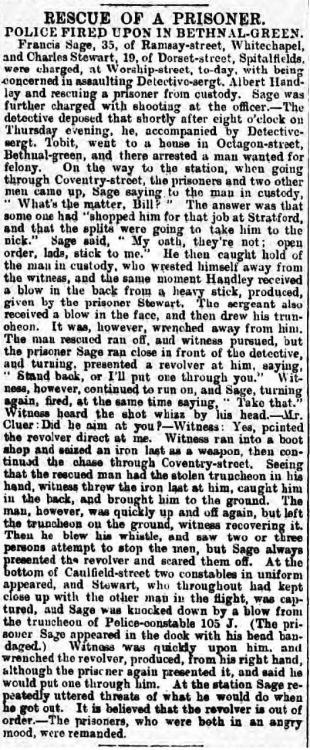
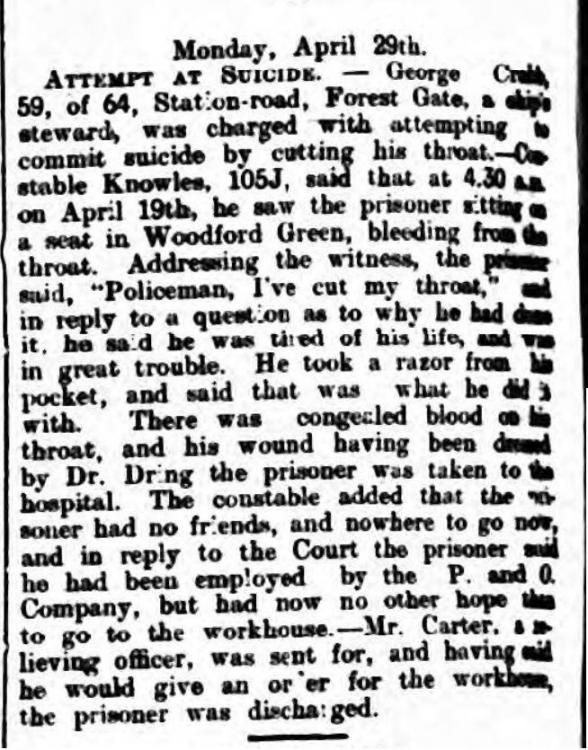
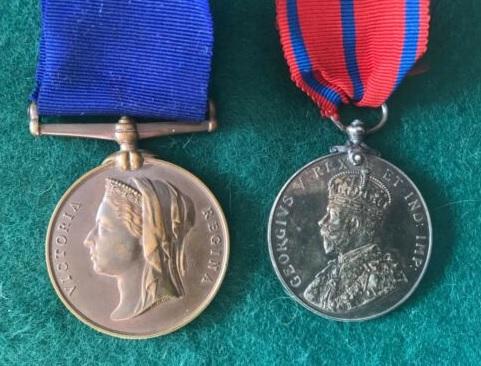
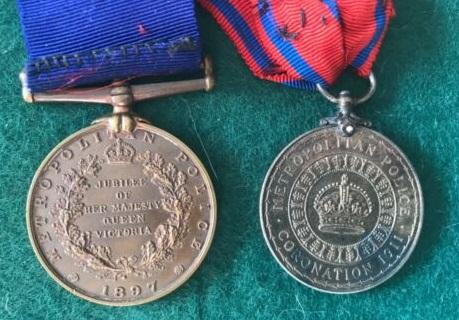
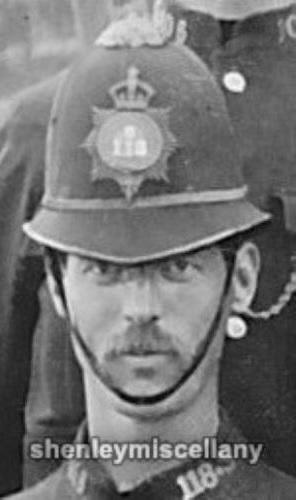



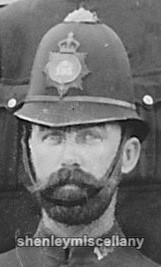

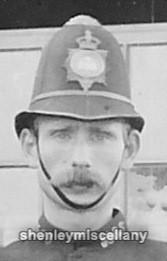
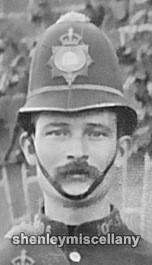
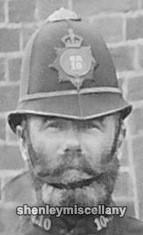
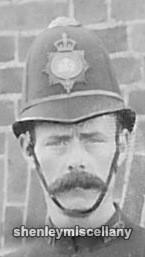

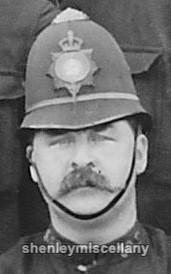
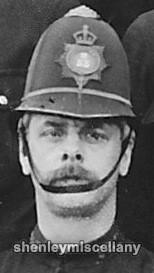

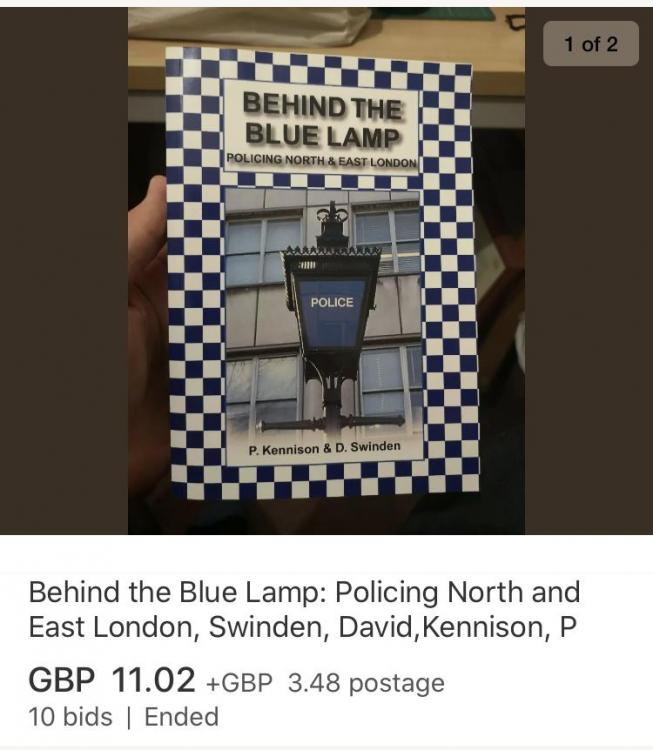
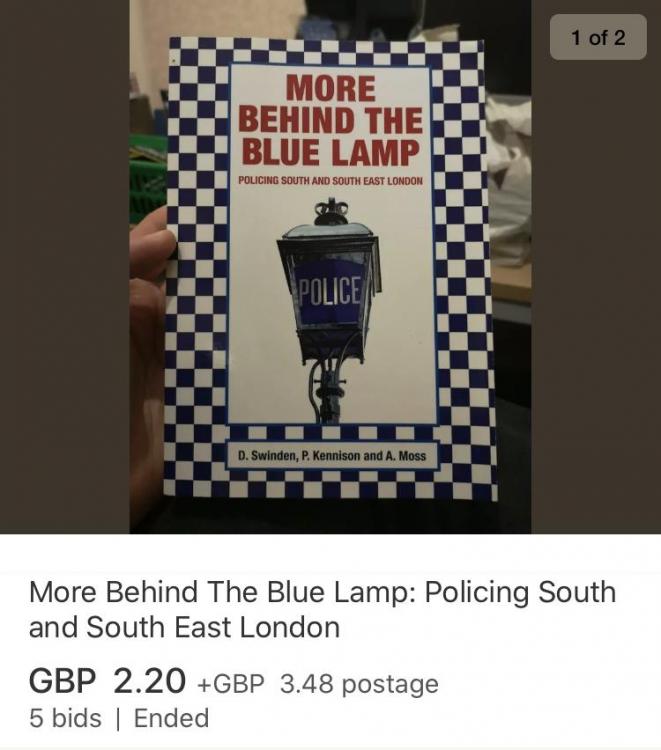



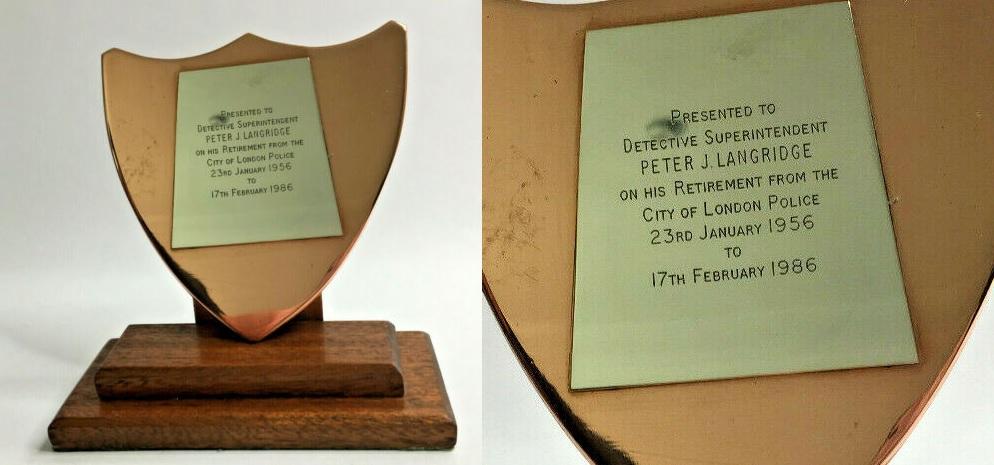
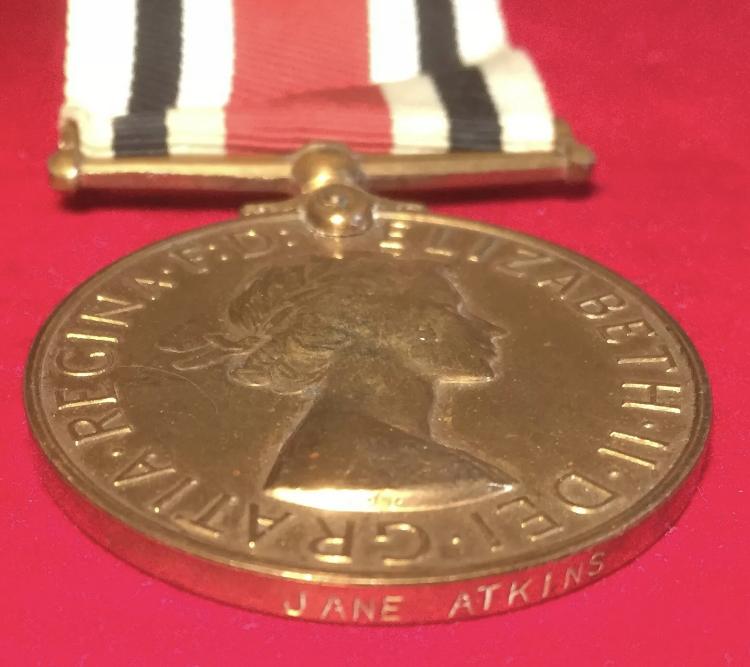

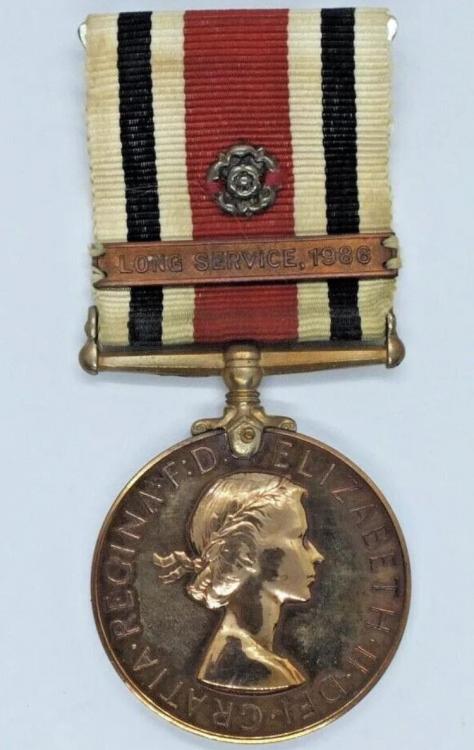

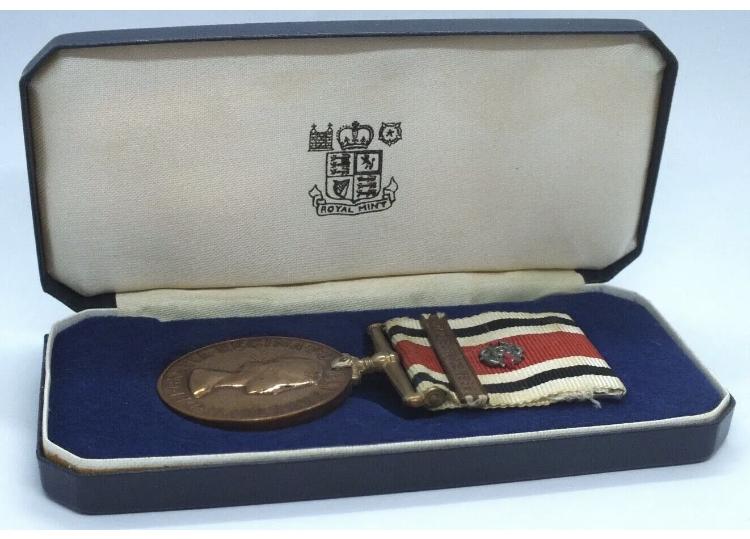
Coin hoard found in Iraqi desert 2005
in Coins & Commemorative Medallions
Posted · Edited by bigjarofwasps
This photo is of a small portion of 50 coins that were found all together in the Iraqi desert back in 2005.
Can anyone tell me what they are?